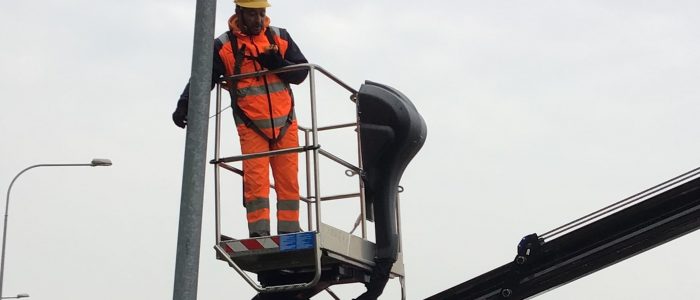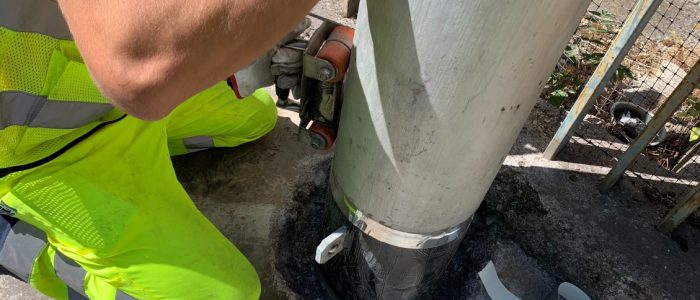Home » Other non-destructive tests » Corrosion Control of Public Administration Poles » Corrosion testing with UTS method
CORROSION TESTING WITH UTS METHOD
METHOD USED FOR VERIFYING THE REMAINING THICKNESS OF PUBLIC LIGHTING POLES
THE METHOD
The ultrasonic method can also be used for verification of the residual thickness of the public lighting poles. Using a device called thickness gauge and a longitudinal waves probe, the ultrasonic pulse is propagated in the affected area. A display shows the thickness detected by the device.
ADVANTAGES
This method provides unequivocal values about the pole’s status from the interlocking base to the top.
DISADVANTAGES
The underground part of the pole, which is also subject to corrosion, can be analyzed only for about 10-20 cm deep. Thickness examination on the interlocking base of the pole may require for the plinth and the protective sheath to be preliminarily removed; if requested, this service may be provided directly by the Centrotest srl.
AVAILABE EQUIPMENT
- NR 2 OLYMPUS PANAMETRICS MG2 XT
- NR 2 SADT SA 40
MAIN REFERENCE STANDARDS
- UNI TS 11479
- EN ISO 16809
POLE REMEDIATION
Centrotest Srl can also perform the following maintenance activities on the pole base (pole remediation) with its own equipment and personnel, specifically:
- Demolition of the pavement at the base of the support to a maximum depth of 200 mm.
- Mirror grinding of the entire area involved in the remediation using flap brushes.
- Anti-corrosive conservation treatment of all metal parts with an appropriate substance, as detailed below.
- Restoration of the demolished pavement using plastic concrete as per your specifications, with the same materials as originally used.
The damaged sheath will be replaced with the installation of a new membrane with the following characteristics:
- A high-purity zinc tape (>99.95% zinc by mass) with a nominal thickness >= 0.080 mm, featuring conductive adhesive covered with a silicone paper liner to preserve the adhesive properties.
- An external membrane made from a modified bituminous polymer, covered with a support film that acts as external mechanical protection.





